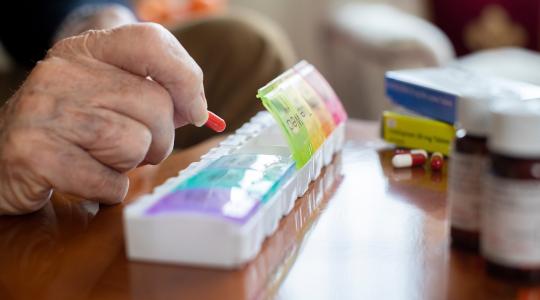More than 30 million people in the U.S. have Type 2 diabetes — and at least 7 million don’t know it yet. That’s because Type 2 diabetes may cause few or no symptoms in the early stages. But as the disease progresses, it can lead to nerve and eye damage, skin infections and amputations.
Don’t let diabetes catch you by surprise. Take steps today to stay healthy. Make an appointment with your provider to discuss your diabetes risk factors and which health screenings are right for you.
If you don’t have a healthcare provider, you can search for doctors by specialty, location and insurances they accept.
Know your diabetes risk factors
Risk factors are things that make you more likely to get a disease. Know your risk factors so you and your provider can discuss diabetes prevention and screening tests.
You have a higher risk of Type 2 diabetes if you:
- Have prediabetes, which means your blood sugar levels are higher than normal
- Have a parent, brother or sister with Type 2 diabetes
- Carry excess weight
- Exercise fewer than three days a week
- Are 45 years or older
- Are of African American, Hispanic/Latino American, American Indian or Alaska Native descent
- Delivered a baby who weighed more than 9 pounds at birth
Some health conditions can increase your risk of getting diabetes, including:
- High blood pressure
- History of gestational diabetes (diabetes during pregnancy)
- High triglycerides (a type of fat in your blood)
- History of heart disease
- Depression
- Polycystic ovary syndrome (PCOS, a hormonal condition)
- History of smoking
- History of organ transplant
- History of chronic steroids for lung diseases, autoimmune diseases
- History of cystic fibrosis
What to do if you have diabetes risk factors
If you know you have risk factors for diabetes, you have the chance to make positive changes. With your provider’s help, you can lower your risk of getting Type 2 diabetes.
Work toward weight loss
If you have prediabetes and excess weight, losing even a small amount of weight can lower your risk. Aim to lose 7% of your body weight to start. That’s about 14 pounds of weight loss for a 200-pound person.
Get active
Exercise for at least 30 minutes, five days a week. You don’t need to join a gym or buy special equipment. Brisk walking or a similar activity is enough. If you can’t do 30 minutes at once, break it up into two 15-minute sessions. Aim for 150 minutes of exercise each week.
Ask your provider for guidance before starting a new diet or exercise program. Together, you can decide what plan works best for you.
Diabetes screening tests
If you have risk factors for Type 2 diabetes, your doctor may recommend screening tests. And even if you don’t have risk factors, doctors usually recommend routine screening starting at age 45. Screening tests are typically blood tests to check your blood sugar levels.
In some cases, you may get diabetes tests in your doctor’s office. Or you may need to go to a medical laboratory for the test. Your provider can tell you where and when to get your tests done. If you go to a lab, your provider will give you a lab order.
Your provider may order one or more tests to check for diabetes:
A1C test
The A1C test is also called a hemoglobin A1C or HbA1C. This test gives an average blood sugar level for the previous two to three months. You don’t need to fast before this test.
Fasting plasma glucose (FPG) test
An FPG test checks your blood sugar after you fast for at least eight hours. In many cases, you can get the test in the morning after you fast overnight.
Oral glucose tolerance test (OGTT)
You fast for eight hours before this test. The provider checks your blood sugar. Then, you drink a beverage that contains glucose. About two hours after drinking the beverage, you get your blood sugar checked again.
See your provider for testing
Blood glucose meters and other tests and monitors you buy in a store cannot diagnose diabetes. Your doctor will order the correct tests and talk to you about the results.
If your blood glucose levels are normal, you may need another test in three years. If you have prediabetes or other risk factors, your provider may want to perform another test in one to two years.
Take charge of your health
There are proven ways to prevent or delay Type 2 diabetes and live a healthier life. Talk to your provider about your diabetes risk factors, ways to lower your risk and screenings you need.
Sources: American Diabetes Association, American Heart Association, Centers for Disease Control and Prevention, National Institute of Diabetes and Digestive and Kidney Disease




